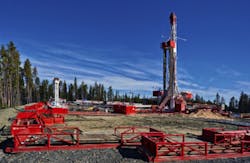EPA reports findings on hydraulic fracturing’s effects on drinking water
WASHINGTON — The Environmental Protection Agency (EPA) has released an assessment of the impacts hydraulic fracturing (“fracking”) activities can have on U.S. drinking water, according to a press release.
Released June 4, the assessment reports fracking has not caused widespread impacts on drinking water, but potential vulnerabilities exist in the water lifecycle, stated the release. Water used during hydraulic fracturing was followed at various points during the process, from its acquisition to wastewater treatment and disposal.
“EPA’s draft assessment will give state regulators, tribes and local communities and industry around the country a critical resource to identify how best to protect public health and their drinking water resources,” said Dr. Thomas A. Burke, science advisor and deputy assistant administrator of EPA’s Office of Research and Development, in the release.
Read also: Contaminant of the Month: Fracking
“It is the most complete compilation of scientific data to date, including over 950 sources of information, published papers, numerous technical reports, information from stakeholders and peer-reviewed EPA scientific reports,” Burke added in the release.
Potential vulnerabilities, according to the release, include:
- Water withdrawals in areas with low water availability
- Hydraulic fracturing conducted directly into formations containing drinking water resources
- Inadequately cased or cemented wells resulting in below ground migration of gases and liquids
- Inadequately treated wastewater discharged into drinking water resources
- Spills of hydraulic fluids and hydraulic fracturing wastewater including flowback and produced water.
EPA found occurrences when fracking activities impact drinking water resources related well integrity and wastewater management, but it determined the instances were small compared with the large number of hydraulically fractured wells in the U.S., reported the release.
The Science Advisory Board will finalize the study after review by the board and the public, shared the release.
Click here to review the assessment.
